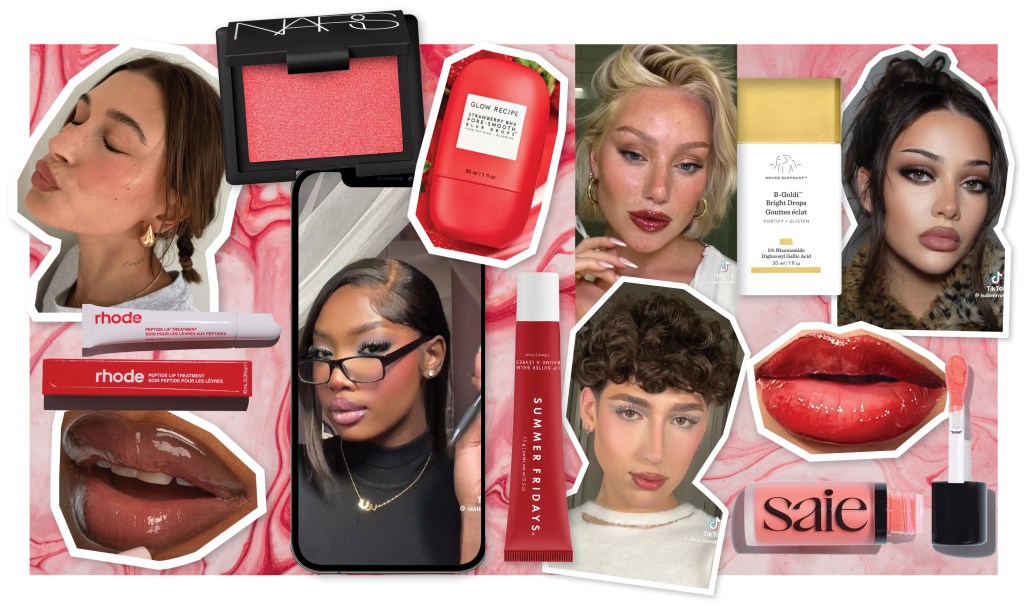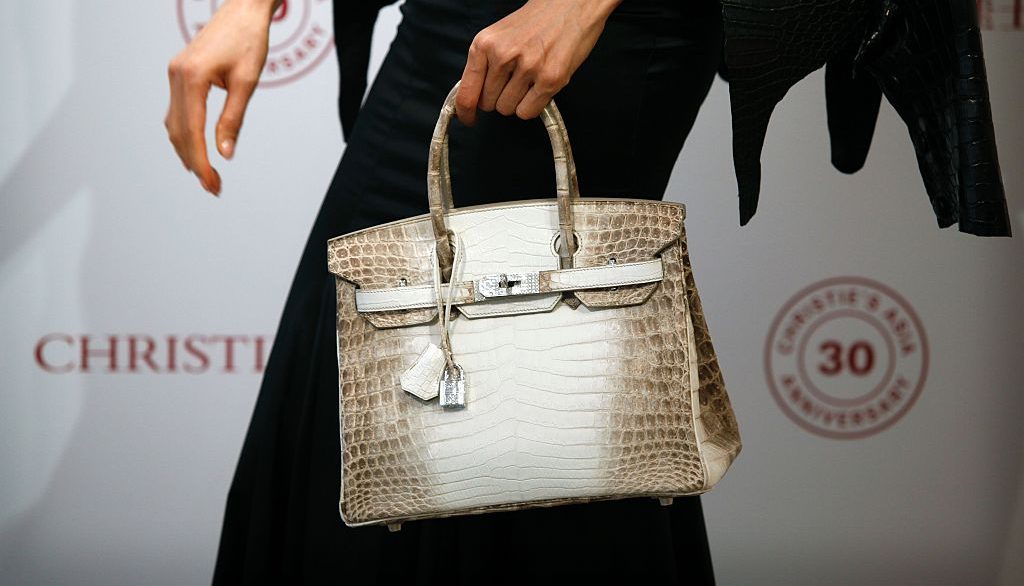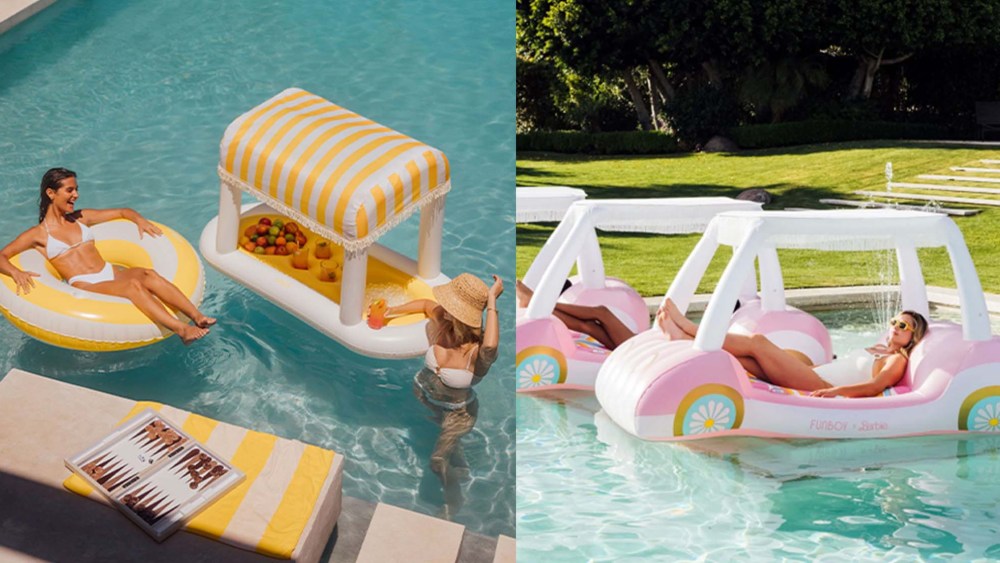Influencer Rachel Rigler, 23, always begins her day with an iced latte, but during a June mid-morning sip and a scroll through Pinterest she saw more than usual in her cup of joe.
“I was seeing pictures of this bronzy, smokey-eye kind of makeup look while drinking my latte and I was like — you know, it’s kind of giving latte makeup,” said Atlanta-based Rigler, who instantly took to TikTok to share a tutorial for the look.
Her inaugural video has since garnered more than 2.7 million views, 183,000 likes and spawned numerous spin-off looks including matcha makeup, pumpkin spice makeup and mocha makeup (not to be confused with cherry mocha makeup — a success story to a slightly greater degree).
Related Articles
“It was definitely a gradual build,” Rigler said of momentum for latte makeup, which earned a Hailey Bieber cosign one month after its debut (when Trendalytics data indicates the trend peaked) and ushered in a subsequent era of gourmand-inspired beauty aesthetics including strawberry girl makeup, cherry cola lips, blueberry milk nails, tomato girl makeup and the like.
But before those, it was the allover-rosy “cold girl” makeup that had TikTok’s beauty community in a chokehold. There was also the Chinese-inspired Douyin makeup, which shared similar minimalist components to its “clean girl” and “that girl” makeup predecessors. Office siren makeup — which is, in truth, not so much about makeup but mostly about donning rectangular glasses à la Giselle Bündchen in “The Devil Wears Prada” — also rose through the ranks.
Now mob wife makeup, characterized by statement lips, full eyelashes and an allover matte finish, presides as the most recent entrant to the breakneck cycle of TikTok beauty aesthetics.

When it comes to what exactly jumpstarts a trend, “it doesn’t necessarily have to be a Hailey Bieber, but it has to be something — some culturally significant person or thing,” said Kendall Becker, director of trend and editorial strategy at Trendalytics.
“Sometimes the beginning of the trend isn’t as important as the person who has decided it’s the beginning,” added art historian and cultural commentator Seema Rao. “It can be the person who’s at the right height, has the right amount of ‘clout’ to say a trend is good, to be the one to propel it.”
Whatever the catalyst may be, most of these aesthetics are what Trendalytics classifies as micro-trends, or those which “pop up weekly on TikTok and are usually hyper-specific or reactionary to things like celebrity posts,” said Michael Appler, chief operating officer and creative director at Cancel Communications.
The average life cycle of a micro-trend hovers around six months or less, though “the more specific a trend is, the shorter its shelf life is going to be,” said Trendalytics’ chief innovation and strategy officer Lauren Bitar.
During the trend’s July-August peak, latte makeup was netting roughly 35,000 weekly Google searches, which in January dropped to just more than 4,000 weekly searches. Mob wife, meanwhile, peaked on Jan. 20 after entering mainstream discourse in early January, indicating a potentially shorter life cycle.
“Clean girl,” by contrast, has seen rare longevity. One of the first aesthetics to gain prominence on TikTok, the trend comprises a glowy, “no-makeup makeup” beauty look but also a certain wellness-oriented lifestyle; the so-called clean girl is one who wakes up early, drinks green juice, exercises regularly, dons a slicked-back bun and embodies myriad other stereotypical signifiers of put-togetherness.
The “that girl” aesthetic, which also rose in summer 2022, is a near-identical concept, though perhaps slightly less controversial (“clean girl” quickly caught backlash for its seeming exclusionary and inaccessible nature).
Unlike most of their peers, the two trends have cycled in and out of prominence since their emergence nearly two years ago, never fully disappearing and even seeing significant spikes in search and social buzz around March 2023, and again this past December, according to Trendalytics.
“Something like a ‘clean girl’ is one of those looks that’s easy to execute, it can be made up using products that you already own — it hits a lot of those key factors that make it want to come back time and time again,” Becker said.
For beauty creator Alissa Holmes (@alissajanay1), who enjoys dabbling in new trends as they arise, “clean girl” serves as something of a baseline look, while trend-driven videos or tutorials can be an audience acquisition tool.

“Clean girl makeup is more like my everyday makeup, but posting about trends helps push your content out more and then people start to see, like, ‘oh, it’s her again — now she’s doing this trend’ — some of those people wouldn’t be able to find you if they hadn’t been searching for the trend,” said Holmes, who counts just more than 800,000 followers on TikTok and typically uploads one video per new trend she decides to experiment with.
For brands, jumping on these trends can be more hit-or-miss.
Not only does speed-to-market need to be intensified, which is tricky in itself, but brands who attempt to piggy back onto a trend and miss the mark pose the ultimate risk: seeming too try-hard.
“The hope is that a brand would be able to capitalize on an organic trend, but I think that’s also when the fatigue and frustration comes from the consumer — that’s when they might say, ‘OK, I’m not playing into that,’” said Spate cofounder Yarden Horwitz.
Perhaps unsurprisingly, it’s fast-fashion retailers like Boohoo, Shein and Fashion Nova who most often integrate trend language like into their products and marketing, with Trendalytics data showing that more than 86 products in Boohoo’s assortment currently reference the “that girl” trend.

Beauty brands, on the other hand, are namely importing these trends into their marketing through influencer content. Armani Beauty, for example, tapped a group of creators including Meredith Duxbury last fall to spearhead a “pumpkin spice makeup” campaign, while Holmes says she has executed a number of trend-centric briefs for brand partners, in particular surrounding latte makeup and hot chocolate makeup.
“It’s all about timing; if you’re a brand and you’re following a trend, you could be too late and that could date you,” said Cecilia Gates, founder of Gates Creative Agency.
Added Jade Beguelin, cofounder of 4am Skin, “There’s definitely a careful balance; rather than being a trend follower, as a brand you want to be a trend-setter — and that can sometimes be a slower game.”
Still, brands can stand to benefit from tapping into trends that are in clear alignment with their identity.
“Category trends can be easier to slot into versus the makeup look trends, which can be a little more fleeting,” said Gates, who facilitated a series of lip-combo campaigns with MAC Cosmetics, in which the brand tapped a number of popular beauty creators like Jodie Woods and Alissa Ashley to curate their own lipstick, gloss and liner bundles.
“Everyone on TikTok was talking about their lip combos, and MAC has the assortment to support that. You have to make sure what you’re doing is true to your brand, otherwise you risk looking like you’re all over the place,” Gates said.
In fact, Gates’ distinction between product trends and these more nascent “look” trends is one of increasing importance — especially considering how often trendy looks of varying relevance actually share core components.
“A lot of people will look at what’s happening on TikTok and assume they are looking at a different consumer, or a consumer whose interests change very quickly,” Horwitz said. “Strawberry girl is not that far off from clean girl, however it evokes an entirely different feeling.”
Much of the appeal to partaking in TikTok’s trend du jour lies not in any specific novelty to the look itself, but rather the act of indulging in a new vibe alongside a community of people who are doing the same.
“Beauty is the most accessible change someone can make to themselves,” said Rao, adding that this low barrier to entry feeds consumers’ appetite for constant newness, while fueling the trend cycle.
The speed of these trends, though, isn’t as consequential to actual product trends as one may think. Bronzing drops, which are core to the latte makeup look, have continued to see sustained interest long past latte makeup’s peak, growing 218 percent in searches during the past three months versus last year.
Beyond that, the emergence of one trend does not necessarily signify the end of another.
“People are saying [mob wife] is the death of clean girl — our data doesn’t indicate that,” said Horwitz, adding that searches for “clean girl makeup” remain up 29 percent year-over-year.
Testament to the importance of the right trend name at the right time, mob wife actually shares ideals of the quietly growing Tumblr girl and indie sleaze trends, said Horwitz — the look simply happened to go mega-viral as mob wife (which some have theorized is related to the 25th anniversary of “The Sopranos” being this year).
And while mob wife may indeed be reactionary to the clean girl and quiet luxury aesthetics, “these trends exist in the same ecosystem and benefit from one another,” Appler said.
“We don’t know that ‘mob wife’ will necessarily last into the fall, but the aesthetics of the hair and the makeup will definitely continue to see sustained growth,” Horwitz added.


